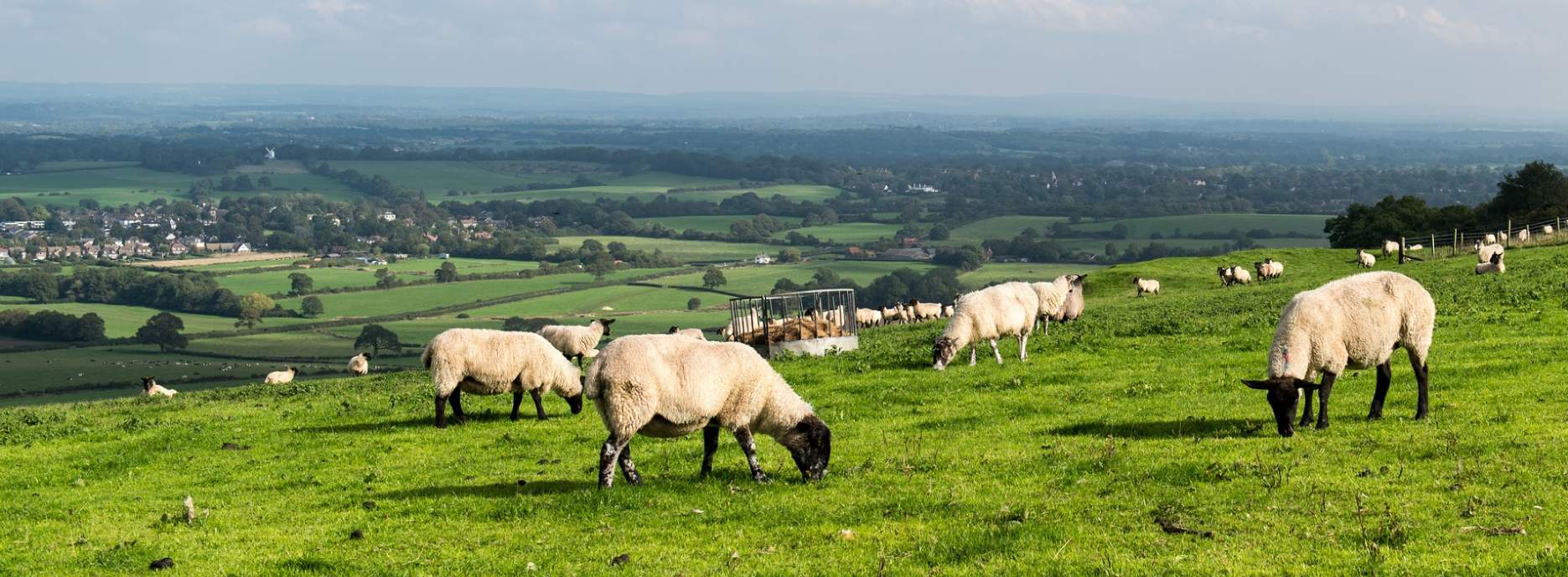The agricultural transition is in full swing across England, Wales and Scotland, with the shape of future policy set out and farmers able to start the process of assessing how to get their businesses match fit for 2030. Here are four trends to watch for in the years ahead:
1. Domestic food security: increasing geo-political tensions have been acknowledged in the Government's recent strategy paper on trade, accelerated by climate change and conflict. With no current obvious pathway to avoiding the worst consequences of climate change, we can only expect further shocks to global trade in the next five years. This winter has already seen drought disrupting the Panama Canal and regional instability disrupting the Suez.
An ongoing trend towards onshoring food production to mitigate trade risk is the logical consequence, but this has stalled over energy prices and a reluctance on behalf of retailers to accept that anything has changed, even after COVID-19 and the war in Ukraine. But a response is inevitable: retailers like to compete on choice as much as they like to compete on price, and none of them will want to be the one that loses out on availability. However, domestic production cannot be guaranteed in a high-wage, high-regulation economy such as the UK so supply chains will need to pay farmers enough to produce food, allowing them to achieve a reasonable return on capital for the level of risk they assume. There are opportunities for farmers here, but further food price inflation is inevitable and necessary if we are going to have food available on the shelves.
2. Rising expectations: the stark differences between England’s farm policy on the one hand and Scotland and Wales on the other are laid bare in each announcement on future agricultural support schemes. The most obvious difference relates to baselines. The Welsh Government has set out 17 different ‘universal’ actions that it wants its farmers to comply with to access a similar level of funding to what they currently receive under the basic payment scheme.
The Scottish Government has also indicated that a wide range of basic policies and activities will be needed to access public funding. This is consistent with the idea of ‘public money for public goods’, as farmers in both countries will be delivering over and above the ‘regulatory baseline’.
In England, however, farming standards above the regulatory baseline will be a matter of choice. The Sustainable Farming Incentive offers payments for a wide range of environmental practices, but it is optional in uptake and application. This produces complexity for supply chains sourcing from multiple countries, both within mainland Britain and globally, as these supply chains need standard pieces of environmental and (increasingly) social information about how farm businesses are producing food. Carbon audits might be optional under English agricultural policy, but they are unlikely to be optional in agri-food supply chains sourcing in the UK. The private sector is, therefore, likely to have more visibility in driving English farm practices than in Scotland and Wales, but the cost and complexity of this will need to be addressed. Standardisation through disclosures aligned with Task Force on Climate-Related Financial Disclosures and Task Force on Nature-Related Financial Disclosures will happen quite quickly, and environmental reporting from all British farms will be normal within five years.
3. Community eating: low-cost food has been embedded as a pillar of social welfare policy since the foundation of the consumer economy in the 1980s, and it seems unlikely that any government is able to stand back from this in the face of a cost-of-living crisis and static economic growth. Until domestic renewable energy prices are delinked from global markets at least, cooking at home will be a luxury for too many. The result could be the increasing normalisation of collective eating within urban populations. For now, community kitchens repurpose food that could be wasted into meals for low-income residents, but logic dictates it’s an inefficient use of resources. Innovative businesses may even make it a fashionable ‘supper club’ choice, proving a challenger concept to the isolation of home delivery. Price pressures on single-use plastics common in takeaways will support this.
4. Taxing questions: at this time of transition, farmers are being tasked to ask the simple question, why do I farm? For some, it’s a passion for producing something. For others, it’s for the next generation. For any who have been doing it simply to get the annual basic payment, new justifications are needed.
If protecting the asset for the next generation has been a major driver, reform of tax reliefs could be transformational. Both the Conservative and Labour parties have been mooting reform of wealth taxes as a means of raising much needed cash and relieving the burden on income taxes. Conservative views range from getting rid of inheritance tax (IHT) altogether to cutting the rate or increasing the personal allowance; Labour want to reform it but have suggested agricultural property relief should remain. We await the outcome of the recent consultation on extending property reliefs to long-term environmental land uses.
Few dare articulate the upside of a more progressive set of farmland taxes. Without the weight of IHT planning on farm businesses, assets might be passed on sooner, the average age of farmers might fall, and new entrants might bring in ideas and enthusiasm. Irish-style income tax reliefs could drive the let land market. Of course, what’s unhelpful is politicians arguing over tax reform, as uncertainty is the worst outcome for business planning. The most certain thing that can be said for now is that the influence of tax planning on land may change in the short term.
Further information
Contact Kelly Hewson-Fisher or Andrew Teanby

.jpg)
.jpg)
.jpg)
.jpg)

.jpg)


.jpg)
.jpg)